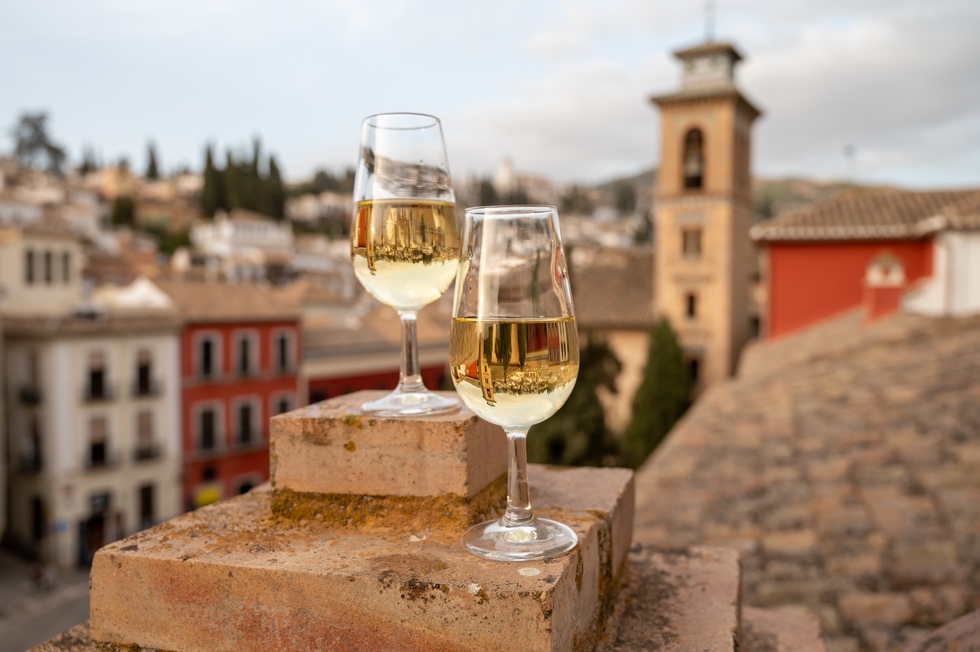Sherry is one of the world’s most famous types of wine, but it's also one of the world's most unsung. It’s best appreciated once you have visited the places where it has been made for centuries.
A tour of the so-called “sherry triangle” in a corner of southwestern Spain, between the cities of Jerez de la Frontera, Sanlúcar de Barrameda, and the town of El Puerto de Santa María, is a great way to get to know the various styles of the traditional fortified wine called sherry—and to understand what makes the region of Andalusia so distinct.
Kick off in Jerez (pronounced heh-reth), the aristocratic city that gives sherry its name. There are direct flights to Jerez from Madrid, Barcelona, and major European cities, and good rail links from elsewhere in Spain.
If you’re planning to taste the sherry on your tour, bear in mind that it’s considerably stronger than table wine, so it’s best to leave the driving to others. We’ll provide transport suggestions throughout this itinerary.
Day 1
For your hotel, start in Jerez. At the affordable end, Soho Boutique Jerez occupies a former bodega (wine cellar) of the sherry makers Williams and Humbert, while the more expensive Hotel Bodega Tío Pepe has close-up views of the cathedral next door.
Hotel Bodega belongs to the city center compound of the wine giant González Byass (pictured below), producers of the world’s best-selling fino sherry, Tío Pepe. The famous sombrero-wearing, guitar-wielding logo looms above on what is said to be the world’s largest weather vane. A two-hour wine tour—so extensive that some of it is conducted on a motorized train—deals in superlatives and feels a bit corporate, but it does provide a fundamental education in what makes sherry unique.
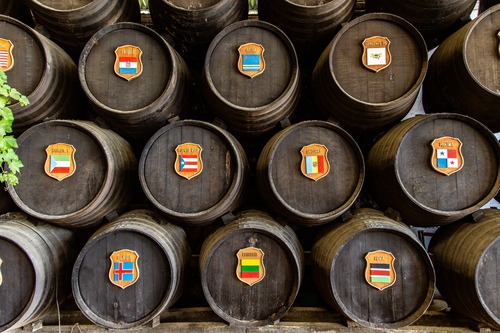
(Credit: pql89 / Shutterstock)
You’ll learn about the range of sherry styles, from pale, bone-dry fino through the dark, liquid raisin of Pedro Ximénez. You’ll observe the solera aging process in rows of oak barrels, and see the cellarmaster manipulating the venencia, a cup on a long rod used to draw and fill a glass from the barrel, spilling scarcely a drop.
Wine tours are offered at most of the famous sherry houses across the city, but perhaps the most refined is at Bodegas Tradición. This boutique house specializes in very old sherries known as VOS and VORS, and the tour concludes with a visit to the owner’s private collection of Spanish art. It’s a rare privilege to peruse paintings by the Spanish masters Velázquez, Zurbarán, and Goya while you have a glass of 30-year-old oloroso in hand.
Sherry is often thought of as an aperitif, but that’s an attitude chef Javier Muñoz is keen to dispel. His delightful Carboná restaurant, set in a former wine warehouse, offers multi-course tasting menus paired with half a dozen sherries—say, veal sweetbreads with amontillado, ibérico pork with palo cortado, fresh fruit with a fino cocktail. It’s a fine choice to cap your evening.
Day 2
After that sherry-soaked beginning, you may want to consider a teetotal start to your second day of touring. Besides sherry, Jerez excels in two other Andalusian passions: horsemanship and flamenco.
Book online to catch a performance of “How the Andalusian Horses Dance” at the Royal School of Equestrian Art (pictured below)—it's a mesmerising display of purebred horses and their riders in perfect harmony.
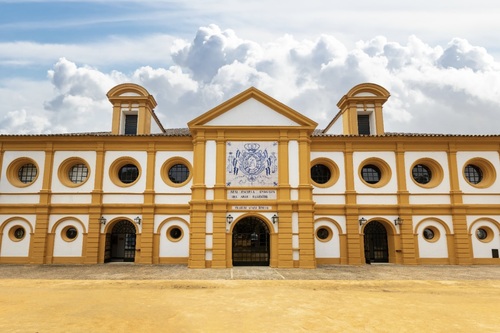
(Credit: agsaz / Shutterstock)
Jerez is considered the birthplace of flamenco, and there are many opportunities to see the fast-paced bulería form that originated here. Our favorite is Tabanco Pasaje, a tiny venue that hosts daily performances, and serves excellent chicharrones (thinly sliced pork belly) and sherry from the barrel.
From Jerez, it’s an hour by bus to the seaside city of Sanlúcar de Barrameda. This is the home of manzanilla sherry, the pale, delicate style with a salty tang obtained through aging in the sea air. In Spain, manzanilla is even more popular than the fino made in Jerez.
To understand the appeal of manzanilla, visit one of the many wineries in town that are identifiable by their antique brand artwork. Bodegas Barbadillo, which makes the popular Solear brand, is the biggest producer. Its cathedral bodega is an awe-inspiring sight as the sun floods through a circular window.
The restaurants along Sanlúcar’s Bajo de Guía riverfront all serve excellent seafood, but Casa Bigote is clearly the locals’ favorite. A plate of salty langoustines accompanied by a glass of cold manzanilla at the taberna, where barrels serve as tables, is an experience to savor.
After lunch, hop on the ferry that crosses the river to the nature reserve of Doñana for a walk on the beach with a backdrop of umbrella pines and exquisite bird life.
If you have more time, you can book a half-day tour of the beautiful, though threatened, marshlands.
Then catch a bus to Cádiz. That provincial capital lies just beyond the sherry triangle, but it is so close and so vibrant that it would be a pity to miss it. Its role in the sherry story dates back to 1587, when Sir Francis Drake attacked the Spanish fleet here and made off with 2,900 barrels of the stuff, prompting an enduring British love affair with the drink.
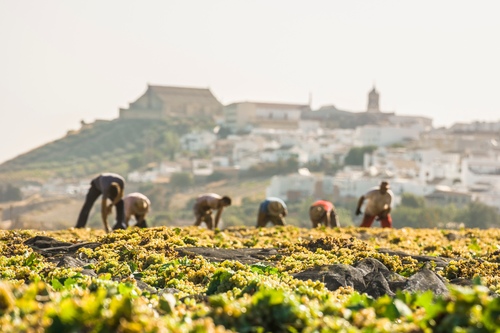
(Harvest at Pedro Ximénez | Credit: Shutterstock / Julio Sanchez)
Day 3
From Cádiz, take a 20-minute catamaran ferry crossing to the third point of the Sherry Triangle: El Puerto de Santa María.
It was from here that Christopher Columbus set sail in 1492, and the wealth generated by trade with the New World gave El Puerto its reputation as the city of a hundred palaces. Several of them are still scattered around this appealing seaside town, embellished with ostentatious coats of arms.
Osborne, famous for its black bull logo, is the big sherry and brandy name around here. You can learn about the fascinating history of Spain’s roadside bulls in its winery museum, and, for a price, sample the top quality ibérico ham the company also produces, perfectly paired with rare old sherries. (Click here for our road trip itinerary built around the celebration of ibérico ham.)
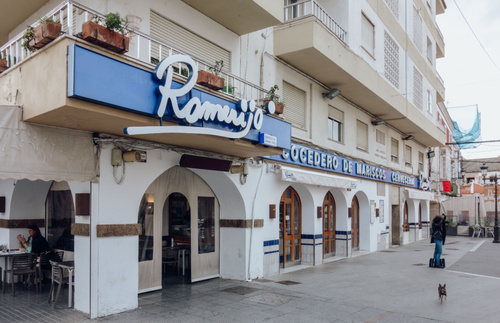
(Credit: Jose y yo Estudio / Shutterstock)
For lunch, don’t miss Romerijo (pictured above), a sprawling seafood institution where long tables of Spanish daytrippers demolish platters of crustaceans. Try tortillitas de camarones—crunchy yet chewy shrimp fritters—perhaps with a glass of Osborne’s Bailén oloroso.
Your sherry triangle will be complete, but it’s understandable if won’t be quite ready to move on yet.





